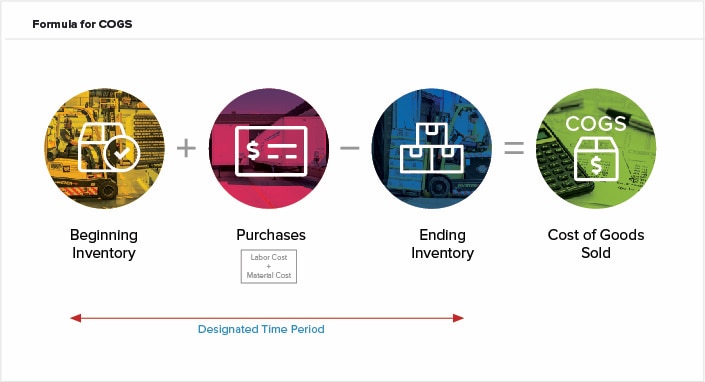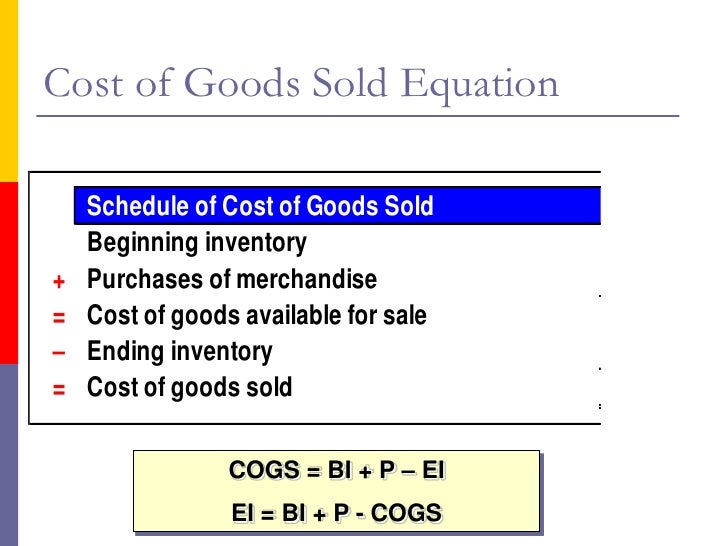

Send invoices, track time, manage payments, and more…from anywhere.Ĭost of Goods Sold (COGS) is the cost of a product to a distributor, manufacturer or retailer.
#Cogs equation software#
Pay your employees and keep accurate books with Payroll software integrationsįreshBooks integrates with over 100 partners to help you simplify your workflows Set clear expectations with clients and organize your plans for each projectĬlient management made easy, with client info all in one place Organized and professional, helping you stand out and win new clients Track project status and collaborate with clients and team members Time-saving all-in-one bookkeeping that your business can count on Tax time and business health reports keep you informed and tax-time readyĪutomatically track your mileage and never miss a mileage deduction again Reports and tools to track money in and out, so you know where you standĮasily log expenses and receipts to ensure your books are always tax-time ready Quick and easy online, recurring, and invoice-free payment optionsĪutomated, to accurately track time and easily log billable hours
#Cogs equation professional#
The cost of goods sold is also known by the acronym COGS.Wow clients with professional invoices that take seconds to create Analysts like to track the gross margin percentage on a trend line, to see how well a company's price points and production costs are holding up in comparison to historical results. The cost of goods sold is usually separately reported in the income statement, so that the gross margin can also be reported. Given the issues noted here, it should be clear that the calculation of the cost of goods sold is one of the more difficult accounting tasks. There can also be differences in the cost of goods sold under the cash basis and accrual basis of accounting, since the cash method does not recognize expenses until the related supplier invoices are paid. Alternatively, an average costing method may be used to derive the cost of materials.Ĭharging to expense any scrap that is considered abnormal, rather than charging it to overhead.Ĭharging to expense the difference between standard costs and actual costs for materials, labor, and overhead.


This should be done as soon as an inventory item has been tagged as obsolete the expense recognition is not spread over several reporting periods.Īltering the cost of materials when a different FIFO or LIFO cost layer is used. All of the following factors must also be taken into account:Ĭharging to expense any inventory items that have been designated as obsolete. The calculation of the cost of goods sold is not quite so simple as the general methods just noted. To use the periodic inventory system, purchases related to manufactured goods must be accumulated in a "purchases" account. Thus, if a company has beginning inventory of $1,000,000, purchases during the period of $1,800,000, and ending inventory of $500,000, its cost of goods sold for the period is $2,300,000. Cost of Goods Sold Calculation with the Periodic Inventory SystemĪn alternative way to calculate the cost of goods sold is to use the periodic inventory system, which uses the following formula:īeginning inventory + Purchases - Ending inventory = Cost of goods sold If there is a physical inventory count that does not match the book balance of the ending inventory, then the difference must be charged to the cost of goods sold. In addition, the cost of goods sold calculation must factor in the ending inventory balance. The cost of goods sold does not include any administrative or selling expenses. The list may also include commission expense, since this cost usually varies with sales.


 0 kommentar(er)
0 kommentar(er)
